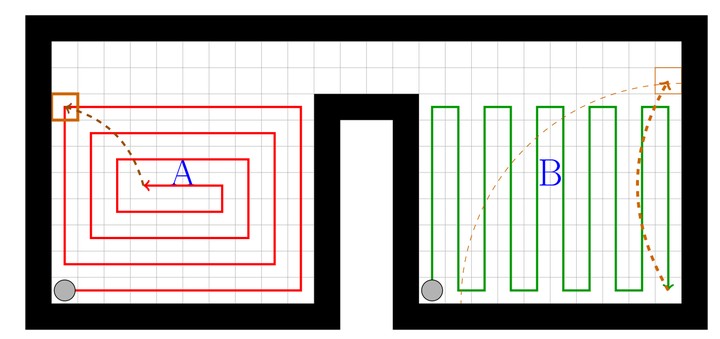Abstract
This Bachelor thesis presents an approach for the complete coverage path planning (CCPP) problem which occurs for different robotic applications, such as autonomous lawn mowers or vaccuum cleaners. Methods used for localization [27], map representation [10] and planning [14] are discussed under consideration of sensor noise and uncertainty about the own position induced by the movement of the robot. An efficient method to solve the CCPP problem under uncertainty is proposed and evaluated due to simulations. The results show that under simulated conditions, the autonomous lawnmower covers the field of work faster and can guarantee complete coverage, in contrast to commercially used techniques. Furthermore, an efficient algorithm to divide the working area into smaller areas is developed, which leads to an increased computational and storage efficiency.
